
TEV Wahine was a twin-screw, turbo-electric, roll-on/roll-off passenger ferry. Ordered in 1964, the vessel was built by the Fairfield Shipbuilding and Engineering Company, in Govan, Glasgow, Scotland for the Union Steam Ship Company's Wellington-Lyttelton Steamer Express Service in New Zealand.

Pamir was a four-masted barque built for the German shipping company F. Laeisz. One of their famous Flying P-Liners, she was the last commercial sailing ship to round Cape Horn, in 1949. By 1957, she had been outmoded by modern bulk carriers and could not operate at a profit. Her shipping consortium's inability to finance much-needed repairs or to recruit sufficient sail-trained officers caused severe technical difficulties. On 21 September 1957, she was caught in Hurricane Carrie and sank off the Azores, with only six survivors rescued after an extensive search.
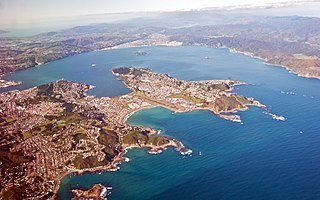
Wellington Harbour, officially called Wellington Harbour / Port Nicholson, is a large natural harbour on the southern tip of New Zealand's North Island. The harbour entrance is from Cook Strait. Central Wellington is located on parts of the western and southern sides of the harbour, and the suburban area of Lower Hutt is to the north and east.

Matiu / Somes Island is the largest of three islands in the northern half of Wellington Harbour, New Zealand. The island is 24.9 hectares in area, and lies 3 kilometres south of the suburb of Petone and the mouth of the Hutt River.

Seatoun is an eastern suburb of Wellington, the capital city of New Zealand and lies on the east coast of the Miramar Peninsula, close to the entrance to Wellington Harbour.

Oriental Bay is a bay and suburb of Wellington, the capital city of New Zealand. Known for being both a popular beach and an opulent centre of affluence in the city, it is located close to the central business district on Wellington Harbour.

GMV Aramoana was a roll-on/roll-off train ferry operating across Cook Strait between 1962 and 1983.

Interislander is a road and rail ferry service across New Zealand's Cook Strait, between Wellington in the North Island and Picton in the South Island. It is owned and operated by state-owned rail operator KiwiRail. Three roll-on roll-off (RORO) vessels operate the 50-nautical-mile route, taking about three hours to complete the crossing.
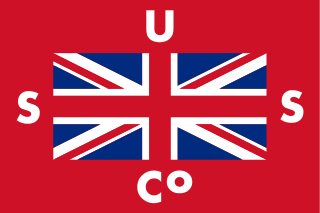
Union Steam Ship Company of New Zealand Limited was once the biggest shipping line in the southern hemisphere and New Zealand's largest private-sector employer. It was incorporated by James Mills in Dunedin in 1875 with the backing of a Scottish shipbuilder, Peter Denny. Bought by shipping giant P&O around the time of World War I it was sold in 1972 to an Australasian consortium and closed at the end of the twentieth century.

Steeple Rock/Te Aroaro-o-Kupe is a large rock off Seatoun at the west of the entrance to Wellington Harbour, rising 7 metres (23 ft) above sea level. The rock plays a role in warning ships off the coast. It is the location of a marine light and an unbeaconed trig station.

Kirkcaldie & Stains was a department store in Wellington, New Zealand. It was established in 1863 by John Kirkcaldie and Robert Stains with a capital of £700. The first store was opened on Lambton Quay. In 1868 Kirkcaldie & Stains moved to its final location at the corner of Lambton Quay and Brandon Street, expanding several times. There was a branch on Cuba Street, Wellington from 1870 –1876 and one in Napier from 1897 until 1917.
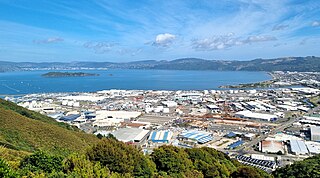
Seaview is an industrial suburb of the city of Lower Hutt, in Wellington, New Zealand. Situated on the eastern coast of the Hutt Valley, the suburb lies between Te Awa Kairangi / the Hutt River and Petone, and the bays of Eastbourne to the south. Seaview is a centre for bulk liquid fuel storage for the lower half of the North Island, and a site for heavy industry. It is also a base for support services for trucks and transportation businesses and the location of the wastewater treatment plant for drainage from the Hutt Valley. Seaview is home to the Port Road Drags, the longest-running street drag races in Australasia.
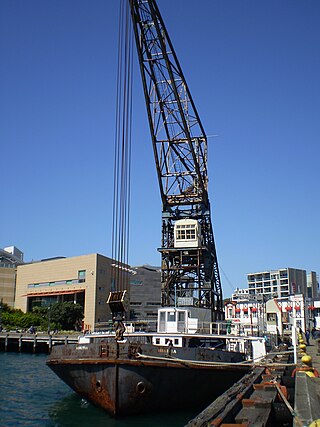
Hikitia is a self-propelled floating steam crane in Wellington Harbour, New Zealand. She is thought to be the only working steam crane of her type in the world.

HMS Endeavour replica is a replica of HMS Endeavour, the bark commanded by Lieutenant James Cook when he charted New Zealand and the eastern coast of Australia.

Evans Bay is a large bay at the southern end of Wellington Harbour, New Zealand. Located between the Miramar Peninsula and Hataitai, it was the site of New Zealand's first patent slip and served as Wellington's international flying-boat terminal from 1938 until 1956. It is named after George Samuel Evans, an early Wellington settler.

Wellington Harbour Board was the body which formerly managed the shipping and commercial affairs of the port of Wellington in New Zealand. It was constituted in 1880 and was disestablished in 1989.

Whitireia Park is a headland north of Tītahi Bay and Te Awarua-o-Porirua Harbour in Porirua, in the Wellington Region at the southern end of New Zealand's North Island. It is a park administered by the Whitireia Park Board, in collaboration with Wellington Regional Council. The park includes Onehunga Bay, Kaitawa Point and part of Rocky Bay.
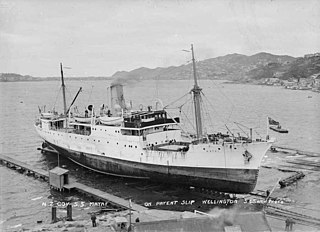
The Evans Bay Patent Slip is a heritage site of the former patent slip located in Evans Bay, in Wellington Harbour in the North Island of New Zealand. The first slipway on the site was commissioned in May 1863 to enable maintenance of the hulls of small vessels. The Wellington Provincial Council was keen to encourage shipping trade by improving facilities in Wellington Harbour and began planning later in 1863 for the construction of a larger patent slip. A concession was granted for the supply, construction and operation of a patent slip on the site. Equipment for the new slip was delivered in 1865 and 1866, but construction was delayed for several years because of a contractual dispute concerning the suitability of the design for the ground conditions. The original suppliers lost a court case and withdrew from the project. The Wellington Patent Slip Company was formed to take over the assets, and construction began in 1871. The Patent Slip was officially opened in March 1873.

CentrePort Wellington (CentrePort) provides land and sea infrastructure and manages port facilities in Wellington Harbour in New Zealand. The company is the successor to the Wellington Harbour Board, and was formed as one of the outcomes of the 1989 local government reforms. This article is about both the company and the port.

Wharves in Wellington Harbour have been essential to the operation of the Port of Wellington and to the development of the city and the lower half of the North Island of New Zealand.























